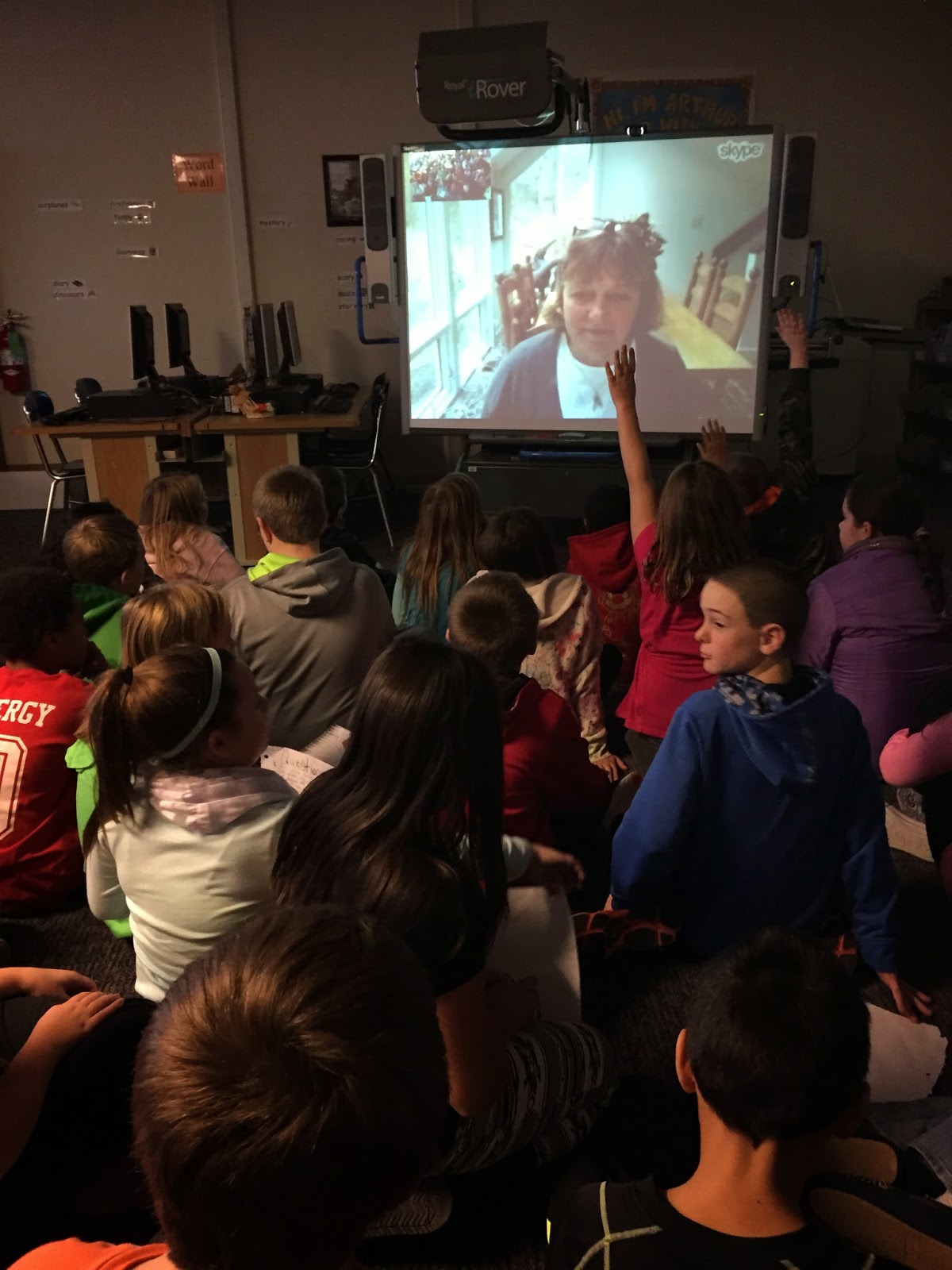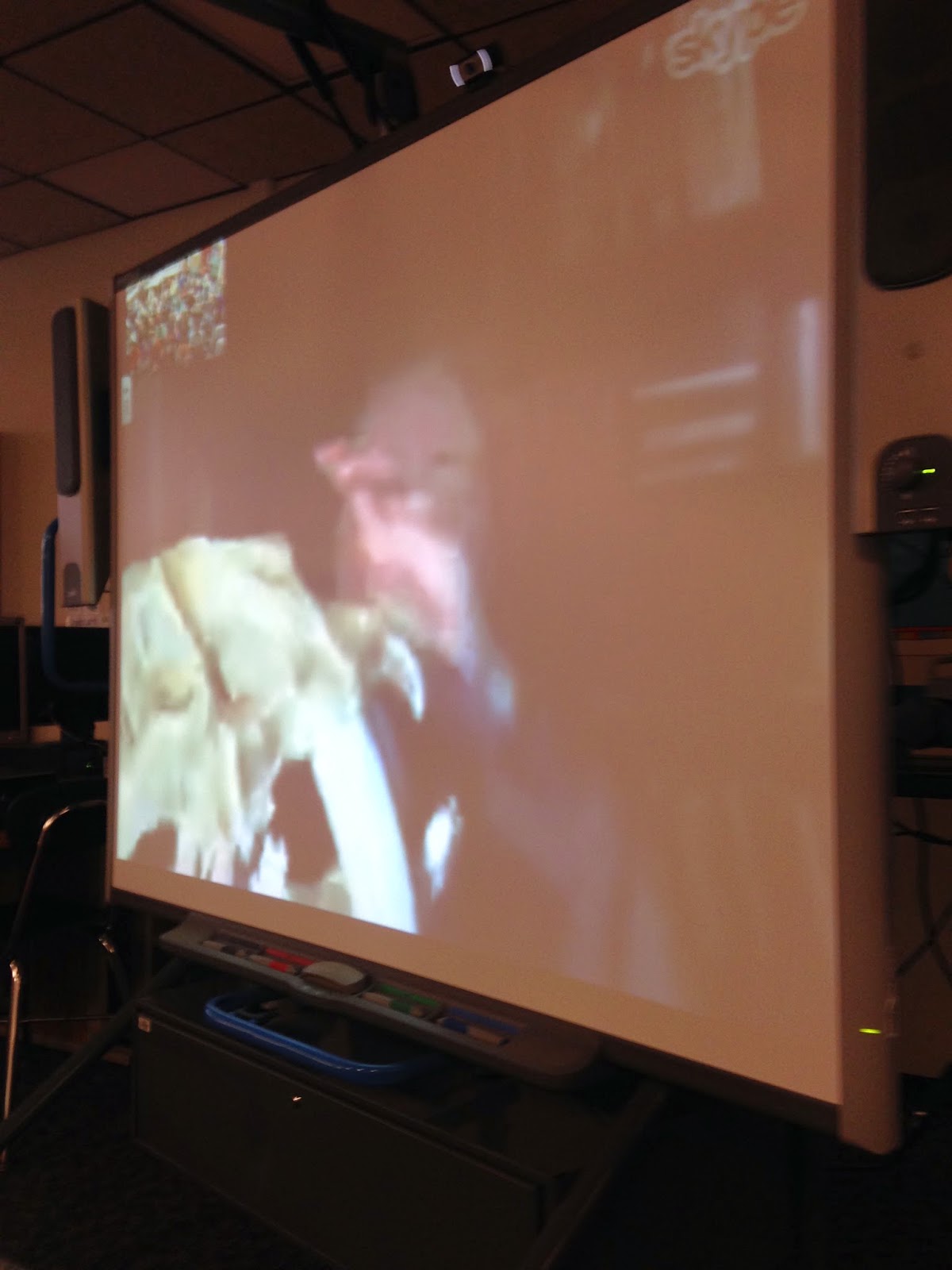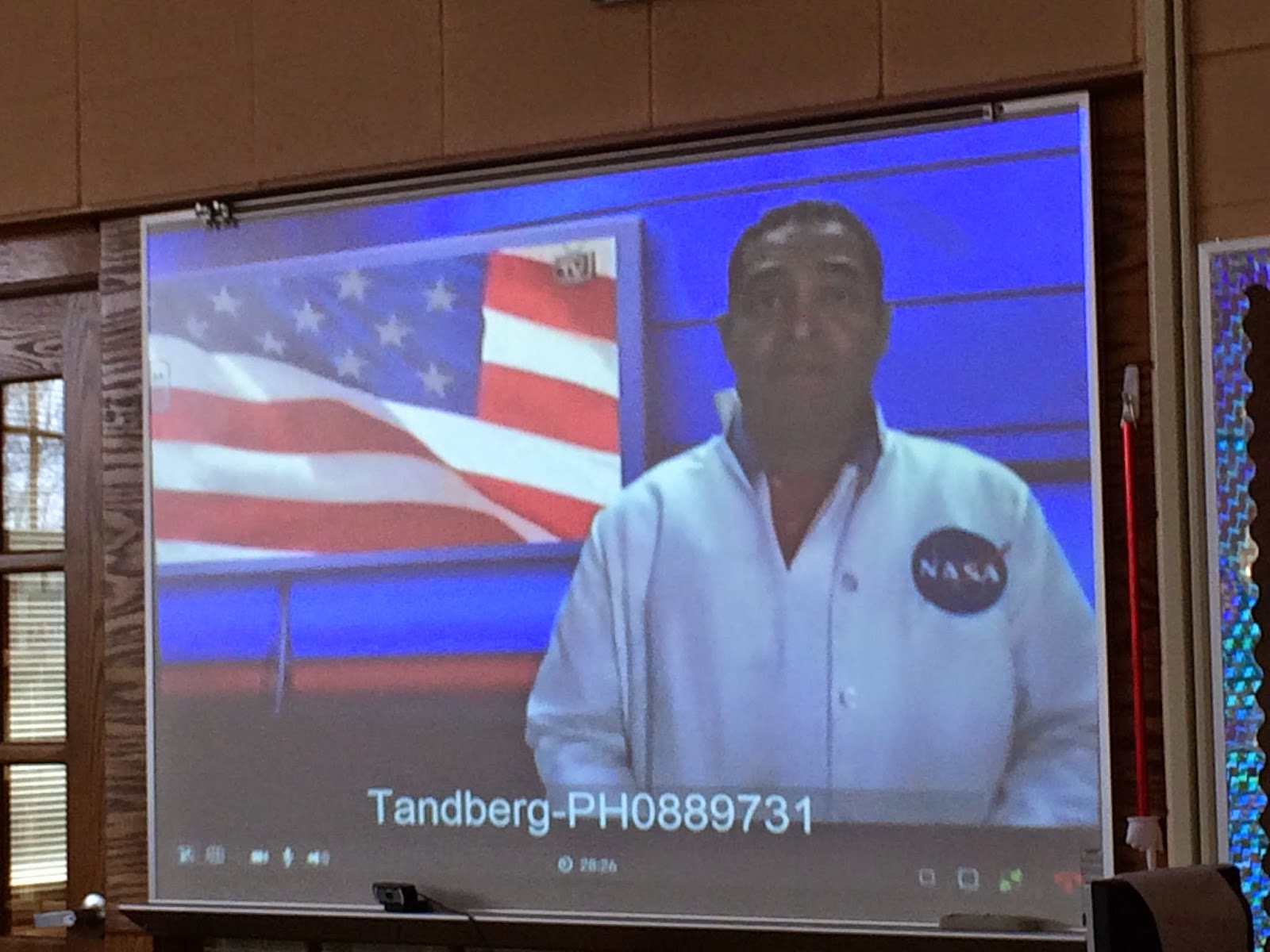
On Tuesday, fifth grade students spoke with Kathleen Benner Duble. Kathleen is an author from Massachusetts who had her first short story published in 1999. Her first book was released in 1996 and was called Hearts of Iron. It was a 2007 IRA Teacher's Choice. She has since then published five more books.
Kathleen walked the kids through the writing process, which for her can take a year or more. She took the students through a character design activity. Kathleen also shared her books that she has written and the stories from her real life that gave her the initial idea to create the story. Most are based on family member's and a short story from their life.
Over the last month as the fifth grade students conducted their explorer research project, they read Duble's book Quest.
 A little about the book:
A little about the book: "It is the year 1610, and the great explorer Henry Hudson is undertaking a difficult journey to find a way to East Asia by going up and over the Arctic Circle. He is determined to find this passage and receive the accolades he has been longing for all his life.
 Told from four points of view, QUEST, recounts the story of this ill-fated journey. Johnny Hudson, Henry Hudson's son, is young and dashing, anxious to go exploring and ready to pull a few jokes on his fellow crewmates. His girlfriend, Isabella Digges, is ready for adventure of her own. As Johnny sails from London, Isabella packs her bags to travel to the Netherlands where she will be spying on England's greatest competitor, the Dutch East Indies Trading Company. Johnny's brother, Richard, is left at home, convinced that adventure and excitement will not be his. And Seth Syms, in trouble with the law, has gained a passage on Henry Hudson's boat, hoping for the peace and quiet of a long sea voyage. But even the best laid plans can go awry. So when Henry Hudson becomes so obsessed with his quest that he ignores the building ice around them, he puts into motion factors that will change all four characters' lives!"
Told from four points of view, QUEST, recounts the story of this ill-fated journey. Johnny Hudson, Henry Hudson's son, is young and dashing, anxious to go exploring and ready to pull a few jokes on his fellow crewmates. His girlfriend, Isabella Digges, is ready for adventure of her own. As Johnny sails from London, Isabella packs her bags to travel to the Netherlands where she will be spying on England's greatest competitor, the Dutch East Indies Trading Company. Johnny's brother, Richard, is left at home, convinced that adventure and excitement will not be his. And Seth Syms, in trouble with the law, has gained a passage on Henry Hudson's boat, hoping for the peace and quiet of a long sea voyage. But even the best laid plans can go awry. So when Henry Hudson becomes so obsessed with his quest that he ignores the building ice around them, he puts into motion factors that will change all four characters' lives!"
Students were able to ask Mrs. Duble about the book, as well as her favorite books, why she wanted to become an author, and if she had any favorites out of her books.
This was a great connection between a social studies unit and reading activity.



















